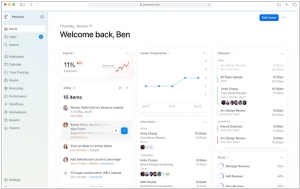Huntress vs Microsoft Defender
March 10, 2025 | Author: Michael Stromann
10★
Huntress delivers a powerful suite of managed endpoint detection and response (EDR) capabilities—backed by a team of 24/7 threat hunters—to protect your business from today’s determined cybercriminals.
40★
Microsoft Defender is working to protect your Windows 10 PC by scanning for malicious software. Microsoft Defender uses real-time protection to scan everything you download or run on your PC. It will turn itself off if you install another antivirus app.
See also:
Top 10 XDR software
Top 10 XDR software
If there’s one thing Huntress and Microsoft Defender have in common, it’s that they both spend their days tirelessly patrolling the digital cosmos, looking for signs of malicious life forms, like an intergalactic border guard whose job it is to spot potential space invaders. Both are excellent at detecting all sorts of nastiness, from malware to phishing attempts and they both have a cloud-based command center where you can keep an eye on things—whether you’re a lone explorer or part of a large fleet. Both of them, naturally, work best when your operating system is a Windows-based spaceship.
But and here’s where things get interesting, Huntress is more of a hands-on, human-driven approach to security, like a detective who specializes in tracking down rogue robots and it’s especially beloved by small businesses and managed service providers. Launched in 2015 in the United States, it takes pride in post-compromise detection—essentially making sure nothing got past you in the first place. Think of it as the security team that investigates the damage, cleans it up and gives you a report so you know what went wrong, kind of like a friendly (and very thorough) cleanup crew after a space heist.
Microsoft Defender, on the other hand, is the security solution you get when you’re living in the massive universe of Microsoft, with its tentacles reaching into everything from personal users to giant corporations. It’s been around since 2006 and was built right into your Windows operating system like a wise old guardian who knows how to automatically handle all the complicated stuff for you. Defender’s talent lies in its machine-learning-driven investigations and its seamless integration with the larger Microsoft ecosystem—Azure, Office 365 and so on—making it the security suite for those who enjoy efficiency, scalability and global presence, especially if your universe stretches across multiple planets.
See also: Top 10 XDR software
But and here’s where things get interesting, Huntress is more of a hands-on, human-driven approach to security, like a detective who specializes in tracking down rogue robots and it’s especially beloved by small businesses and managed service providers. Launched in 2015 in the United States, it takes pride in post-compromise detection—essentially making sure nothing got past you in the first place. Think of it as the security team that investigates the damage, cleans it up and gives you a report so you know what went wrong, kind of like a friendly (and very thorough) cleanup crew after a space heist.
Microsoft Defender, on the other hand, is the security solution you get when you’re living in the massive universe of Microsoft, with its tentacles reaching into everything from personal users to giant corporations. It’s been around since 2006 and was built right into your Windows operating system like a wise old guardian who knows how to automatically handle all the complicated stuff for you. Defender’s talent lies in its machine-learning-driven investigations and its seamless integration with the larger Microsoft ecosystem—Azure, Office 365 and so on—making it the security suite for those who enjoy efficiency, scalability and global presence, especially if your universe stretches across multiple planets.
See also: Top 10 XDR software





